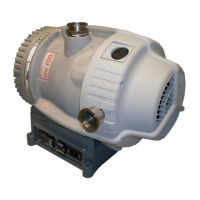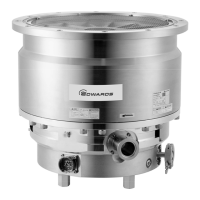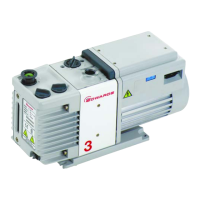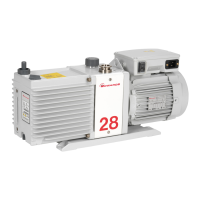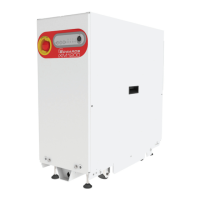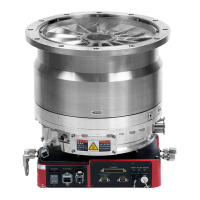5. Operaon
5.1 Use of gas ballast control (if ed)
The gas ballast control can be used to opmise the performance of the scroll pump for
the applicaon. The performance characteriscs of the pump with the dierent ballast
sengs are shown in Table: Performance characteriscs on page 12. The posion of the
gas ballast control can be changed when the pump is o or operang.
5.1.1 Gas ballast control
Use the gas ballast control to change the amount of air introduced into the nal stage of
the pump. Use of gas ballast will reduce the condensaon of vapours in the pump, the
condensates would contaminate the pump. The gas ballast control can be set to select
one of three opons:
To select no gas ballast, turn the control posion to '0'. Use this seng:
▪ to achieve ulmate vacuum
▪ to pump dry gases.
To select low ow gas ballast, turn the control to posion 'I'. Use this seng:
▪
to pump low concentraons of condensable vapours
▪
to decontaminate the pump.
To select high ow gas ballast, turn the control to posion 'II'. Use this seng:
▪ to pump high concentraons of condensable vapours
▪ to clear excess vapours aer processing.
High ow gas ballast 'II' is not intended for long term use as p seal wear is accelerated.
For connuous operaon, to dilute condensable vapours for example, gas ballast
posion 'I' is recommended.
5.2 Start up procedure
WARNING:
Ensure that the system design does not allow the exhaust pipeline to become
blocked.
CAUTION:
A ne dust may be emied from the exhaust of the scroll pump during start up,
parcularly when the pump is new or if new p seals are ed.
Use the procedure below to start up the pump:
1.
Ensure that any vacuum system isolaon valve is closed (if ed).
2.
Connect a suitable lead from the power supply to the appliance inlet at the side of
the pump.
Page 21
A73101880_F - Operaon

